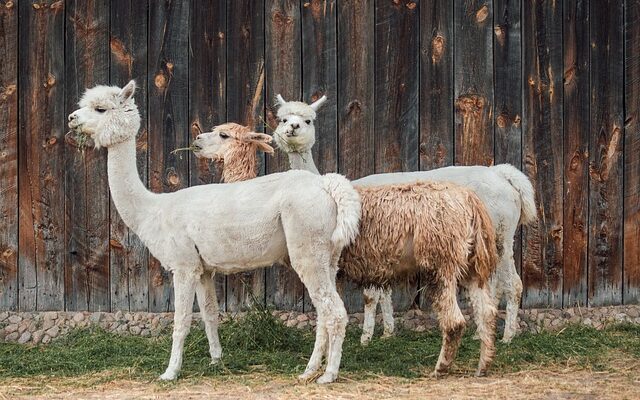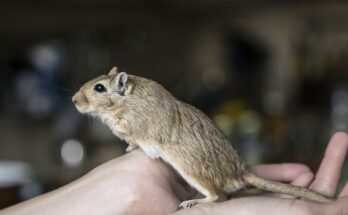Introduction:
A brief overview of Huacaya alpaca
Their significance in agriculture, textiles, and culture
History and Origin Of Huacaya alpacas:
Origins in the Andean region of South America
Domestication and selective breeding by ancient civilizations
Introduction to other parts of the world and establishment of alpaca farms
Anatomy and Physical Characteristics
Description of Huacaya alpaca’s distinctive features
Differences between Huacaya and Suri alpacas
Explanation of their dense, crimped fleece and unique fiber structure
Description:
Description of Huacaya alpaca’s distinctive features
Differences between Huacaya and Suri alpacas
Explanation of their dense, crimped fleece and unique fiber structure.
Discover the charm of Huacaya alpacas – gentle, fluffy creatures prized for their luxurious fleece. Learn about their soft crimped fibers, diverse natural colors, and docile temperament. Explore why Huacaya alpacas are beloved companions and coveted for their warmth and hypoallergenic qualities
Fiber Characteristics and Uses:
Detailed examination of Huacaya alpaca fiber properties
Softness, warmth, and hypoallergenic qualities
Versatility in textile production: yarn, clothing, and accessories
common ancestor about 2 million years ago.
SCIENTIFIC NAME: Vicugna pacos
DIET: Herbivorous
REACH: South America
HABITAT: Mountains, urban areas
TIPS FOR WATCHING:
Zoo Atlanta has Huacaya alpacas. Listen carefully when you are nearby. You can often hear them singing! They can even get past the gate.
GENERAL INFORMATION:
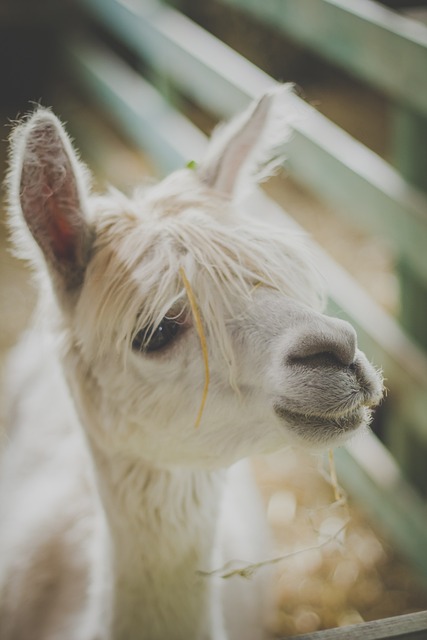
Alpacas are descendants of wild vicuños and were domesticated by Andean peoples more than 6,000 years ago. Today, they are mainly kept for their extremely soft fleece, which is used to make yarn into textiles. Alpaca farms are found all over the world.
PHYSICAL PROPERTIES AND CHARACTERISTICS:
Alpacas have a slender body, a long neck, a small head, and long, pointed ears. They weigh 110 to 190 pounds and are about 3 feet tall at the withers (the highest part of the back). Their most noticeable feature is the soft fur, also called fiber, that covers their body. There are two breeds of alpacas: Huacaya (pronounced wah-KI-ah) and Suri (SOO-ree). Zoo Atlanta has Huacaya alpacas, which are more common and have a woolly, fluffy appearance. Suri has a silkier, straighter fleece texture. There are many variations of alpaca color! There are twenty-two natural alpaca fiber colors including various shades of white, black, brown, and grey. It may look like sheep’s wool, but its fibers are warmer, lighter, and stronger! Depending on the climate, they are usually sheared once a year, with males producing about 8 pounds of fiber and females producing about 5 pounds.
Males’ incisors and canines, called canines, grow longer than females, but this is the only feature that makes them sexually dimorphic, meaning they have no other distinguishing features that distinguish them from others.
LIFESTYLE AND REPRODUCTION:
Alpacas are social animals that live in herds that sometimes include other animals such as goats, llamas, and sheep. A male alpaca is called a macho and females are called hembras. Up to 6 months of age, the offspring is called Cria. Alpacas can breed all year round. They are “induced ovulators”, meaning that the females do not have a regular estrous/breeding cycle, but instead ovulate after mating with a male. Males mate with multiple females. The gestation period is 242 to 345 days. Crias are presocial animals, meaning they can stand and move independently shortly after birth. Crias weigh about 17 to 33 pounds at birth and are weaned at 6 to 8 months of age.
Alpacas communicate through body language, vocalizations, and possibly dung piles.
The most common song sounds are hums, but other sounds include snorts, mother cackles, mutters, screams, and alarms. Like other camelids, alpacas spit at each other when threatened, but rarely intentionally at humans.
Alpacas were domesticated by Andean peoples about 6,000 years ago and still play an important role in the South American economy. In addition to their fiber, their meat is eaten, their skin is used for carpets, clothing, handbags, and toys, and their dung is used as fertilizer and fuel. Their role was and is similar to that of the buffalo in the Great Plains of North America, except that alpacas are domesticated and buffalo are not.
Zoo Atlanta has Huacaya alpacas. Listen carefully when you are nearby. You can often hear them singing! They can even get past the gate.
SCOPE:
Originally domesticated by the Andean peoples of Peru, these animals can now be found all over the world.
LIVING ENVIRONMENT:
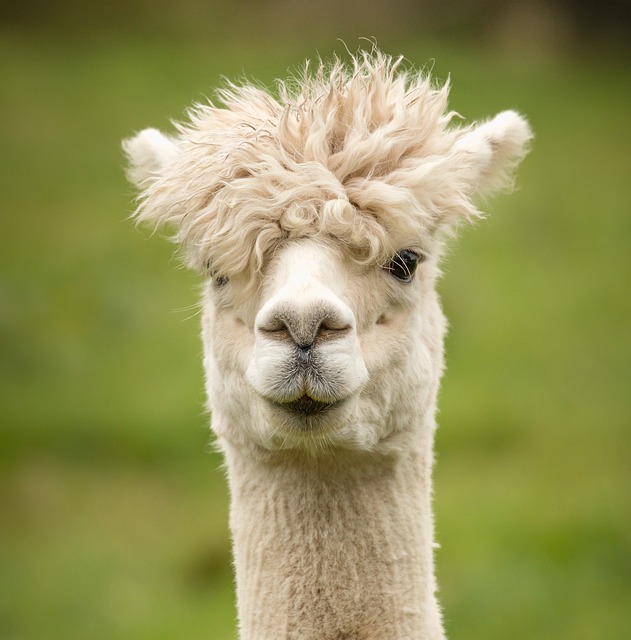
Huacaya Alpaca’s ancestors lived in humid mountain areas, but these domesticated animals can be found in any habitat under human care.
Historical and cultural significance of alpacas in Andean civilizations
Modern-day perceptions and representations of alpacas in art, literature, and media
Alpaca tourism and its impact on local economies.
Breeding and Genetics:
Reproductive behavior and mating habits
Importance of genetic diversity in Huacaya Alpaca breeding programs
Selective breeding for desirable fiber traits and color variations
Care and Husbandry:
Best practices for Huacaya Alpaca farming and management
Dietary requirements and feeding regimen
Shelter, fencing, and pasture management for alpacas
Alpaca Farming and Sustainability:
Sustainable practices in alpaca farming: pasture management, water conservation, and waste management
Economic benefits and challenges of alpaca farming
Role of alpacas in sustainable agriculture and land stewardship
Common health issues in Huacaya alpacas
Preventive care, vaccinations, and parasite control
Veterinary care and emergency procedures
Eating patterns:
Alpacas are pets. They eat grass and are fed hay and leafy food.
Future Prospects and Challenges:
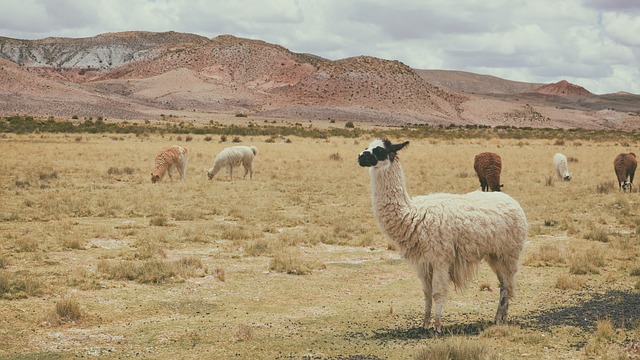
Emerging trends in alpaca breeding and fiber production
Challenges facing the alpaca industry: climate change, market competition, and regulatory issues
Opportunities for innovation and growth in alpaca farming and textile industries
CONSERVATION Of Huacaya alpacas:
Alpacas are a habilitated species, so there are no wild alpacas.
Huacaya Alpaca ancestor and closest wild relative, the vicuña, is currently listed as least concern, although they were previously listed as threatened due to overhunting.
Conclusion Huacaya alpacas:
Recap of key points discussed in the blog post
Reflection on the enduring appeal and importance of Huacaya alpacas
Call to action for continued research, conservation, and appreciation of these remarkable animals
This outline provides a comprehensive framework for a detailed exploration of Huacaya alpacas, covering their history, biology, husbandry, cultural significance, and future prospects. Each section could be expanded into multiple subtopics with in-depth analysis, case studies, and expert insights to create a thorough and informative blog. See more
FAQS:
In addition to their fiber, their meat is eaten, their skin is used for rugs, clothing, purses, and toys, and their dung is used as fertilizer and fuel. Their role was and is similar to that of the buffalo of the Great Plains in North America, with the difference being that alpacas are domesticated and buffalo are not.
There are differences between the two: Huacaya fiber has crimpy waves and grows in bundles, while suri fiber is straight and grows in locks. Huacaya reflects light as brightness, and Suri reflects light as luster. Alpacas come in over 16 different natural earth tone colors, and can be blended into even more!
Alpacas inhabit marshy mountainous areas from southern Colombia and Ecuador south to northern Chile and northern Argentina. They are slender-bodied animals with a long neck and long legs, a short tail, a small head, and large pointed ears.
ALPACA TYPES – SURI & HUACAYA ALPACAS
There is only one species of alpaca – but two fleece types, often referred to as breeds. They are the huacaya and suri alpacas. The huacaya fleece type is commonly described as looking like a “teddy bear” and the suri fleece type as looking like “dreadlocks”.
ALPACA IS A TASTY, HEALTHY MEAT
Alpaca meat has plenty going for it, and it is delicious: it has half the saturated fat of beef (around 3%); it has a third less cholesterol than beef; the total fat content is low, around 6-7%;
Long elegant necks, large eyes, gentle humming, rich colors, bright whites, gorgeous fiber, and playful antics all make them irresistible to those of us who catch the “alpaca bug.” In addition, their ease of maintenance and low impact on the environment make it possible to raise them on small acreage with little …
Alpaca textile products are recognized worldwide in the fashion industry for their luxury and elegant drape. reducing animals such as kel goats (which produce cashmere) the coarse guard hairs must be removed, a costly and tedious process. Alpaca fleece is also devoid of the lanolin that sheep produce.
TERMINOLOGY. A baby alpaca is called a “cria”. A female is called an “hembra” and a male is called a “macho”. TRAVEL.
Alpacas are rare enough to be considered exotic livestock. The two types of alpacas are Huacaya and Suri. Both have fleece that is soft and virtually free of guard hair. The majority of alpacas are Huacaya, whose crimpy fiber grows perpendicular to the skin and gives them a “fluffy” appearance.

